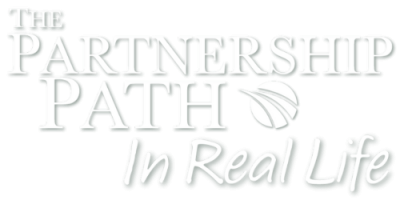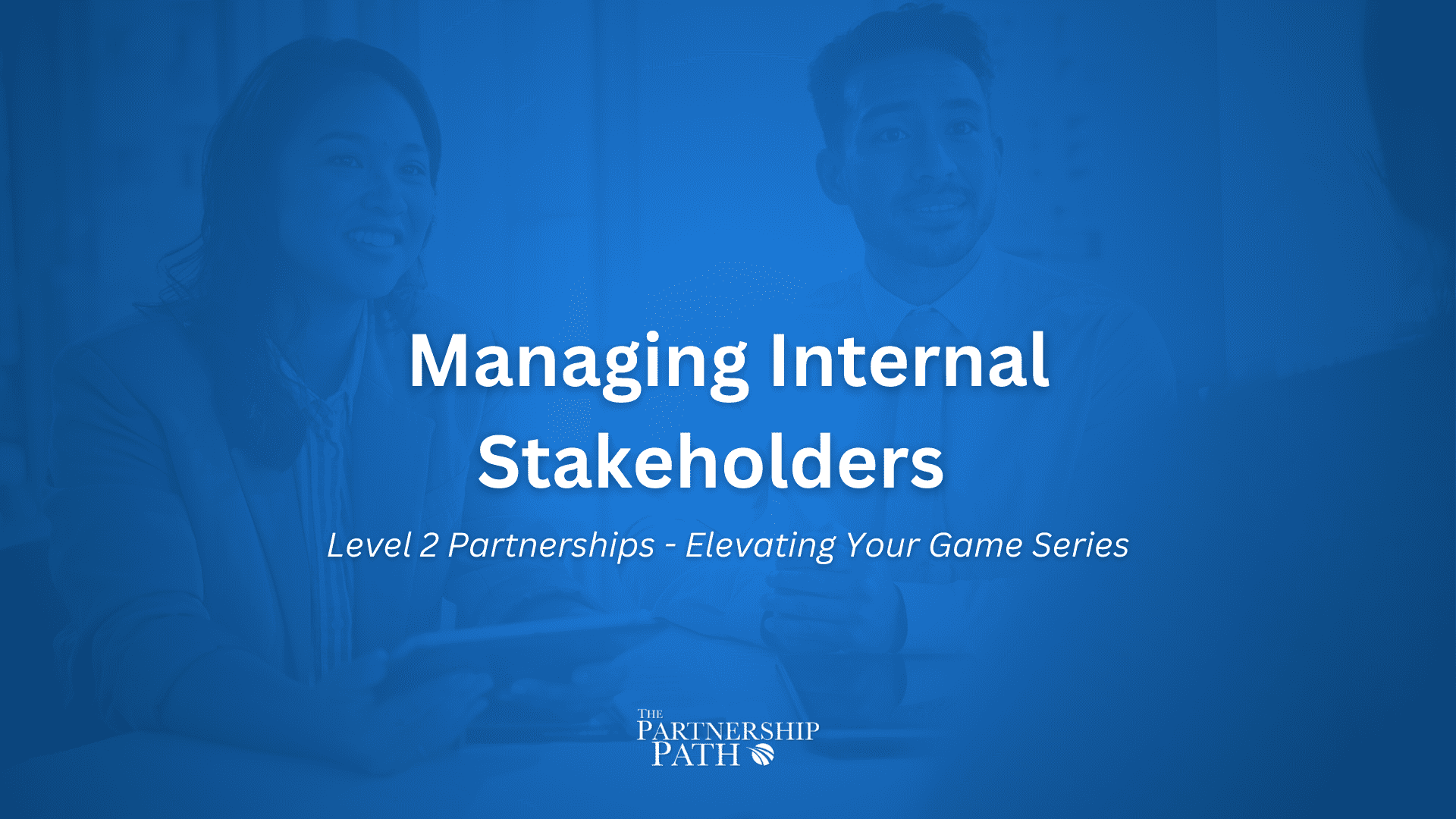Kari Finnigan at Infor on Portfolio Management vs Partnership Management
Episode Summary
In this episode of the Partnership Path in Real Life podcast, host John Rudow speaks with Kari Finnigan, Vice President of Channels at Infor, about managing partnerships in a smart, strategic way that focuses on portfolio growth rather than just individual partner performance.
Kari shares how shifting her approach from “all partners all the time” to prioritizing those with the highest growth potential helped her achieve exponential growth in her channel.
The discussion dives into portfolio-level thinking, engagement strategies, and the key metrics Kari and her team use to identify where to invest time and resources for maximum impact. Kari offers valuable insights from her two-decade career, sharing practical tools and frameworks to optimize channel management.
Transcript
John Rudow (00:01)
Well, hello, Kari, and welcome back to the Partnership Path in Real Life. I say welcome back because we had you on, think, in season one. So it’s really great to have you back on the show. Super excited to hear your thoughts today. But before we do that, I’m going to let you reintroduce yourself to our audience. Tell us a little bit about who you are, where you work, what you do, how long you’ve been working with partners.
Kari (00:24)
Okay, that sounds great. Well, thanks for having me. Yes, it’s been a season or so. So I’m glad I was invited back. I’m Kari Finnegan. I’m a vice president of channel at Infor and I have been working with channel partners for 20 years. I’m just celebrating my 14th anniversary here with Infor. Can’t even believe how fast the time goes. And was that another ERP company six years prior to that?
John Rudow (00:43)
my gosh. Yeah.
Awesome, excellent. Yeah, this is why we like having you on these episodes, Kari, is because you’ve been doing this a long time. You’ve got lots of real life experience. So love to hear what you got to say. Yeah, scars is exactly right. Yeah, this is it’s a brutal world out there. Look, this is we wanted to this episode that Tony and I just did was on managing a portfolio instead of managing the partners that you have or the partnerships that you have one at a time.
Kari (00:57)
Yes, and scars.
you
John Rudow (01:17)
I know you listened to that episode, let’s just, I’ll just start by saying, hey, so what’d you find interesting in what Tony and I had to say in that episode, and what’s your reaction?
Kari (01:28)
Yeah, absolutely. I think for me personally, back when I first went through your training, talking about this concept, this was a huge aha moment for me because being a type A personality, was I wanted to give as much time as I could and all of my coaching as I could to as many partners in my portfolio because that’s how you become the best or that’s how you become burned out or that’s how you don’t really see a solid return on all of that time. So for me, I think
John Rudow (01:38)
Yeah.
Yeah. Right.
Ha ha ha.
Kari (01:58)
I really, once you can understand and look at the future growth potential, the current ability and look at your entire portfolio to depend, to determine where you’re going to get the best return on your time investment, that is where you start to see exponential growth. So that was really for me in my career, that was a big turning point.
John Rudow (02:15)
Yeah.
Kari (02:25)
Because I started realizing, you know, I’m giving just as much time to this partner that might just be opportunistic, but boy, they’re either not taking, you know, they’re not buying into what we’re saying. We’re not really moving forward. And I thought if I could take that time and go over here to a partner who is just soaking up every word and making changes and, you know, going into new geos, exploring new markets, that’s really when I saw my portfolio take.
John Rudow (02:25)
Yeah.
So talk to me a little bit about that. What are some of the, I don’t know, really pragmatic things that you do or that you tell your team to do to try and figure out who should I be spending the time with? How do you have, I mean, we talk about current ability versus potential, but what does that really look like when you do it with your partners?
Kari (03:13)
Right. So now that I manage a team of six channel managers, I encourage them to look at their portfolio the same way that I used to do it once I was informed in the same way. So like many vendors, we often have changes at the start of every year to a portfolio because partners change, channel managers change. And so what I do, and I really wish I had the name of the document because I actually have them when we look at
current ability and future ability, you have three slides that gives, each have multiple, we call it the rainbow document. It’s got multicolored boxes on it. And it digs into specific areas of, know, do they have operational excellence? I literally tell my team to print those off and go through for each partner and say, is this a strength of the partner, a weakness of the partner, or is it kind of just neutral? Okay. And so that it’s, it’s a formula. I think people,
John Rudow (03:49)
Yeah, yeah, yeah. Right. Right.
Yeah.
Okay, okay, yep.
Kari (04:11)
You know, myself included, I like very almost tactical, specific formulaic things. And so then you line up all your partners and you see how they measure and you say, okay, if I know only, you know, 20, 20 to 40 % of my time is going to be on my growth engagement. Where does that real, you know, align? And I think one thing that you mentioned that I really think is so important is your partner that’s producing the most revenue.
John Rudow (04:15)
Right? Yep.
Yeah.
Kari (04:40)
in your portfolio. It doesn’t mean that they’re going, you’re going to have a growth engagement strategy with them because maybe you did in the past and now they’re firing on all cylinders and they’re actually able to continue to grow their business a little bit more independently. They might be more of a maintain engagement strategy because they’re humming, you know? So that was something that you had talked about that I was like, yes, you know, just, it’s not a grow partner. It’s how are you engaging with them?
John Rudow (04:59)
Right. Right. Right.
That’s right.
Kari (05:11)
And what is their current ability, future potential investment that they’re making in the partnership? What does that look like?
John Rudow (05:17)
Yeah. Yeah, that’s a hard thing. I think that’s a hard thing for channel managers to do, right? Because you want to spend your time where it seems like there’s a lot of activity and a lot of movement and a lot of production. When in reality, it’s sometimes just the opposite, right? Those are the ones that we need to just leave alone and let them go. Because I might get a much better return on investment if I invest over here where these guys are hungry, but they’re not exactly sure how to do it. And maybe I can help them get there. Yeah. Yeah. So I love that.
Kari (05:43)
Yeah. Yeah.
John Rudow (05:46)
I love what you said about you essentially like apply numbers to this, right? You take the list that I gave you in the training of like all the different things you should be thinking about, you know, what’s their operational model? What, how good are they at sales? How good are they at delivery? How good are they at marketing? All of that. And you literally attach numbers to those things and add them up and then go, okay, the one with the biggest numbers.
Those are the people who have the most ability or the most potential or whatever. And then, okay, that’s super helpful. Yeah.
Kari (06:18)
Exactly. And then we discuss it because again, I think for those people that you’re trying to overachieve on your quota, of course, again, our mentality is we want to spend all of our time with all of our partners. so until you put some numbers to it to make it a little bit more black and white, at least you surprise yourself. You also can get in a rut where this partner has been my top partner forever. They’re my top, but maybe their business has evolved.
John Rudow (06:43)
Yeah. Yeah, that’s right.
Kari (06:46)
or maybe their ownership structure has changed. And so it’s not the same. And that’s what I like about the format that you laid out. just makes it a more systematic.
John Rudow (06:55)
Yeah, you’ve sort of tickled on some future episodes we’re gonna do this season around kind of competitive mind share and organic growth and some of that, right? Those are the things you’re kind of looking for. Are they capable of some of that? But we’ll save that for those episodes. I’m curious, one of the things we talked about that Tony and I talked a little bit about, and I know you and I have talked about this in the past is run rate, but.
The last time I think you and I talked about this, you were an individual contributor. So I’m curious how do you have that run rate conversation with your team about how much of what you produce happens, whether you show up or not?
Kari (07:37)
Right. And I’ve loved how you and Tony were talking about that because I joke with my team. I’m not asking this to, you know, reduce head count or eliminate yourself. It’s more about, you know, where to spend your time effectively. So it goes back to the point I just made about it’s okay if that top producer, you know, if they’re producing 5 million and I say, what are they going to do if you don’t show up?
John Rudow (07:45)
Right. Right, right.
Kari (08:05)
And it might be hard to admit, but it’s like, you know, they’re probably gonna do four and a half million because they know how to navigate. Because you’ve taught them how to strategize. So for me, what I really look at is, I always talk about, we need to be honest with each other to grow. I want them to be honest with those partners that are going to produce without them showing up so that I can take some of the time they’re investing there and put it.
into the other partners that boy, if they just had a little more help with the marketing or a little bit more sales enablement, they now could be approaching, you know, they could be looking at 50 % growth, 100 % growth, whatever that looks like. And again, it’s a channel manager’s nature to not think like that. And I speak from being one for 17 years. So I think it’s my job as a leader.
John Rudow (08:53)
Yeah, yeah, that’s right.
Kari (08:58)
to make it a really trusted environment where they can be open and honest, and then we can discuss, okay, so do we have the right engagement strategy across your portfolio?
John Rudow (09:07)
Yeah. What about, I’m curious, just from a purely pragmatic perspective too. So I think what we’ve talked about in terms of sort of engagement strategy, right? Figuring out where I should be spending my time. That’s a big part of this sort of portfolio approach. The other part is the looking at lagging indicators, right? Of how do I sit down on a whatever, quarterly basis or at the end of the year and look back and not
just rate myself on each partner, but really start to measure across the portfolio. What do you guys do in there? Do you encourage them to have metrics that they track at a portfolio level and talk to the group a little bit about that?
Kari (09:40)
Huh?
Yeah, absolutely. Metrics are key, both leading and lagging. And so what I have my team do is every metric that they would measure with their partner and the partnership. So things like pipeline, like forecast predictability. Okay, that is huge for me. Conversion rates, looking at the return on the MDF spend.
looking at advance and exit ratios at stages. So I’m asking them to measure that at the partner level, but then I’m also asking them to measure that at the portfolio level. those same metrics. So when you look across your whole portfolio, what is your close rate? What’s your conversion rate? Because what I want them to understand is, and I know you and Tony didn’t talk about this specifically, but when we talk about portfolio management,
John Rudow (10:30)
Okay.
Kari (10:46)
I always tell my team, let’s try to work smarter, not harder. If we notice an area where all of your partners are struggling, then do a portfolio training on that. Talk about, you know, marketing best practices. So same thing with if you look at your portfolio and you notice that your entire portfolio is struggling with conversion rates from, you know, demo to close, for example, we’re looking at very specific stages.
John Rudow (10:56)
Right, right.
Kari (11:13)
And what does that tell you about where you need to be better at coaching and where, you know, what do you need to be honing in on? So that’s a big thing. So the same metrics that you’re managing, you know, looking at your partners, look across your whole portfolio. And then the other thing I would say is look where you have weakness. So recruitment is a huge piece.
You know, we have a lot of different products at Infor. If there is a specific product that nobody in your portfolio sells, but you see the need come up quite a bit and you’re flipping it to other partners or other channel managers and other portfolios, what does that tell you? Looks like we need to do some recruiting there. portfolio metrics are key because that can help you identify trends, which might help training, which also will help recruiting or, you know,
John Rudow (11:49)
Yeah. Yeah. Yeah.
Kari (12:03)
Maybe there’s certain partners that aren’t a fit anymore and that’s a tough conversation But it’s one that you have to have to be a strong business
John Rudow (12:09)
Yeah. Are you finding, so Kairi, you and I have talked about this kind of stuff for the last several years together. And so I’m curious, how well are your channel managers adopting that type of approach where they look portfolio wide at certain metrics and then try and find places where they can do synergistic activities that’ll hit multiple partnerships or multiple partners?
Like are they getting there? Is that something that’s resonating for them and starting, they’re starting to see why that makes them better.
Kari (12:43)
So I will say that it’s not a natural tendency to do that. And so as a leader, when we do portfolio reviews, again, I love it because EQ selling makes it easy. There’s a great template. So we’re doing a review in the beginning. We’re doing a review for their portfolio plan, ideally quarterly, at least once every six months. And so they’re forced to think about it then. And many of my team will say,
John Rudow (12:46)
Right. Yeah.
Kari (13:11)
You know, I hadn’t really looked at it like this in a couple months. And this exercise, knowing that I had to show up with you and go over what my plan was really got me thinking, yeah, we’ve got that new piece in the tech stack. My partners don’t have a clue how to position it. You know, I’ve got to set something up with our enablement team. So it’s not natural. And I think it’s the responsibility, you know, of a leader or even as a channel manager, put that on your recurring calendar, put it on there to say, okay, I need to assess my portfolio because otherwise we just get lost in the day to day.
John Rudow (13:24)
Yeah. Yeah.
That’s right.
Kari (13:41)
And we don’t pull back and look at it portfolio wide enough. Yeah.
John Rudow (13:44)
Yeah. You know, there’s one other thing buried in there. I just want to call out for the community too, which is I think our natural tendency is to think I can’t do that sort of multiple partner training or positioning or whatever because my partners compete with each other and so they won’t want to do that. And my experience has always been actually they’re pretty open to that even when they compete with each other.
They may not share certain things in that discussion, but in some ways, they look at it as a way to learn a little bit about their competition and even to position themselves. And in this world of multi-party partnerships, right, where people are constantly finding new ways to partner together, that can actually be a really good thing. But I think it’s, again, one of our natural tendencies to not want to do that. Have you seen that as well?
Kari (14:40)
Yes, and I think there are certain topics in which partners are more sensitive than others. We all know marketing and lead gen, biz dev, that’s usually a struggle. But what I found is if we get all the partners of a portfolio on the call, and now you’re bringing in an expert, maybe an SMB marketing expert in our market, for example, someone from the vendor that is talking to all the partners.
John Rudow (14:44)
Yeah.
Kari (15:05)
It can be a little reassuring for them as well. Like, hey, we’re not the only ones. You’re struggling with this. You know, we do. There are. Hey, I thought that partner over there, you know, they’re killing it. But they’re they’re taking in on this and they’re asking good questions that we’ve asked as well. So it can help to the topic can definitely make a difference. But I also think the other thing is, yeah, we can rise all ships, right? If we rise that tide across the whole across everyone.
John Rudow (15:07)
Yeah.
Right. Right.
Kari (15:34)
the whole portfolio. I do think, and there’s a lot more collaboration, like you said too, and partners sometimes want to show off their expertise. And so that’s a good chance for them to say, well, we’ve tried this and you’re right. They might not get specific, especially in marketing. They might not say, well, we utilize this company for paper lead, but they might say, hey, 50 % of our opportunities are coming from paper lead and that’s worked well for us.
John Rudow (15:42)
Right? Yeah.
Yeah, yeah, love it. Gosh, Kari, every time I have you on, we could spend all day just chatting. I’m so grateful for you taking the time. Let me give you one last thing. based on what we’ve talked about today, any last words of wisdom that you want to throw out? I know I’m putting you on the spot. You don’t have to have one, but is there something you want to make sure that people walk away with?
Kari (16:02)
I know.
That’s okay.
biggest thing is to step back and ask yourself as a channel manager, recognize where you have impact and where you don’t. And there are just going to be certain partnerships where you can have two partners and you’re giving the same message. And one of them is going to think it was just the best advice and they’re going to run with it and it’s going to increase their production. And there’s another partner where they might just not buy into what it is that you’re saying. It’s like
recognize that quickly and don’t invest either don’t invest time there or don’t keep trying that you you have to really understand where can you make the impact and just continue leaning into those those areas at Infor we say what’s your comparative advantage how are you making your partners better and just play into that not that you’re not going to keep strengthening yourself in other areas but continue to play into that and that i think will just reap great rewards
John Rudow (17:10)
Yeah.
I love that. Thank you, Kari. Thank you so much for coming on the show. Thanks for sharing that wisdom at the end there. That’s awesome. I love it. And hopefully we can have you back again sometime.
Kari (17:30)
Thanks.
Yeah, thanks for having me, John. It’s been a pleasure. All right, be here.
John Rudow (17:35)
Alrighty, bye.
Key Takeaways
- Shift to Portfolio Thinking: Focusing on the entire portfolio rather than individual partners can reveal the best growth opportunities and ensure optimal time investment.
- Engagement Strategy Matters: Not all partners need intensive engagement; prioritizing based on potential and current capabilities is key to effective channel management.
- Measure, Measure, Measure: Track both leading and lagging metrics to evaluate success across the portfolio and identify areas for improvement.



